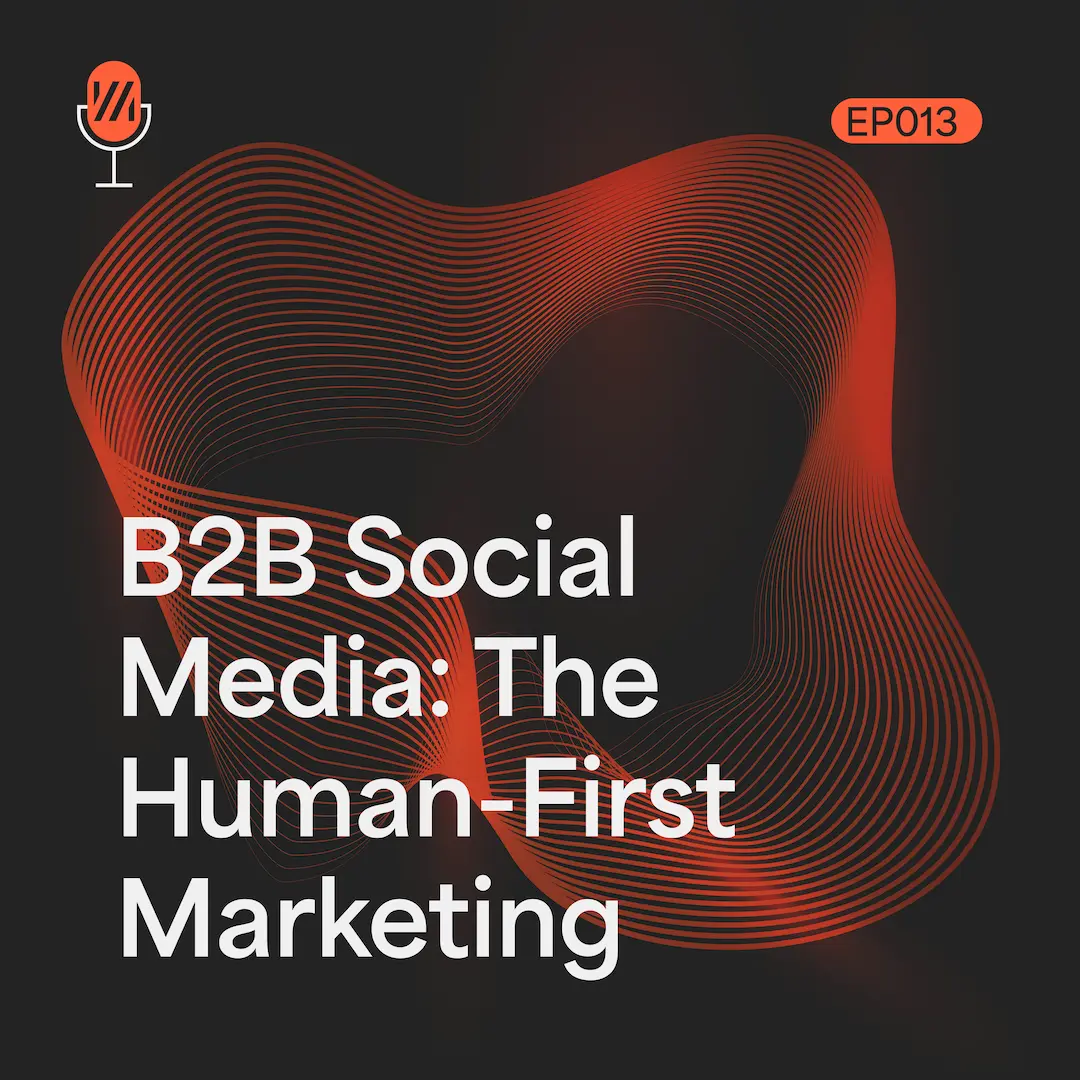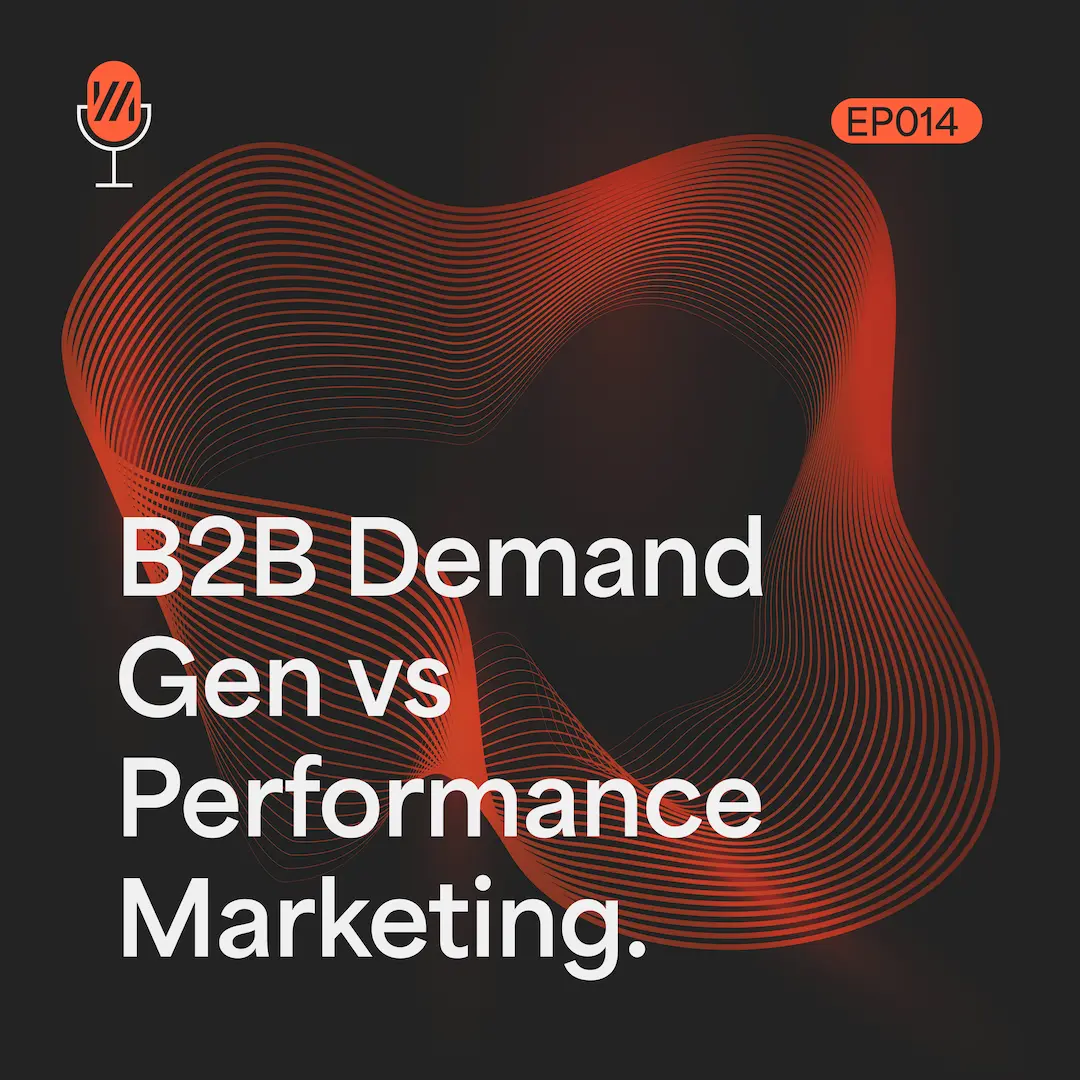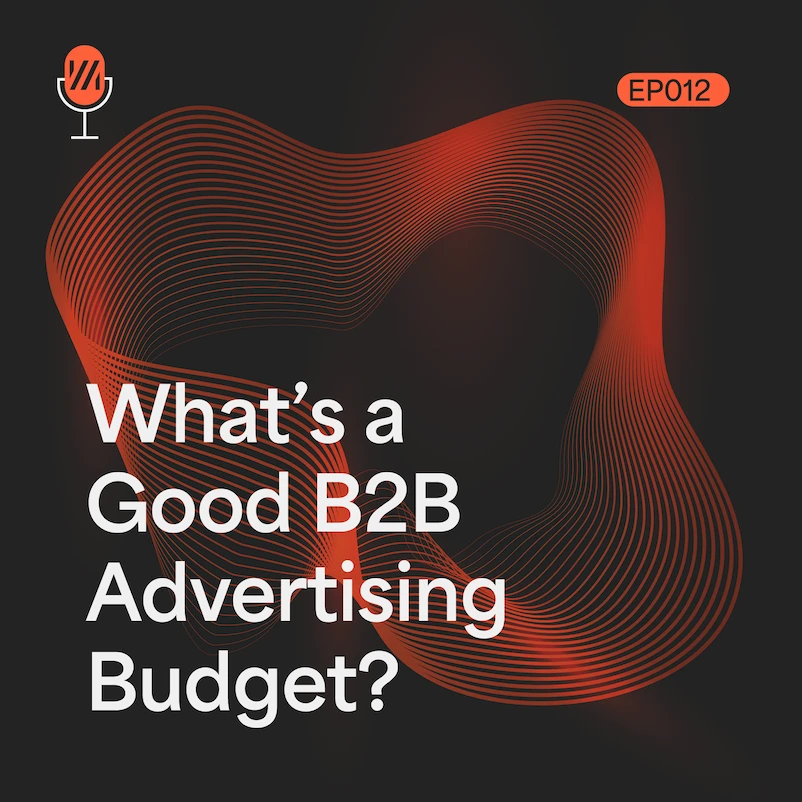You know the frustration of a full CRM that does not translate into sales. Leads pour in, but close rates stay flat, wasting sales time and eroding team morale.
The good news?
You can improve B2B lead quality without slashing your pipeline.
This post unpacks six hidden issues killing your lead-to-sale conversion rate, drawn from episode EP015 of the B2B Performance Marketing Podcast.
We will show you how to improve lead quality in B2B marketing, from diagnosing traffic problems to adding smart friction.
Get ready for practical fixes that boost conversions and make your efforts count.
The Real Cost of Poor B2B Leads
Poor lead quality is rarely one big mistake.
It is a stack of small issues that compound, turning promising campaigns into time sinks.
High enquiry volumes might look great in reports, but if sales teams are chasing ghosts, your ROI suffers.
The fix starts upstream: refine traffic, clarify messaging, and align with your ideal customer profile (ICP).
Focusing on fit over volume leads to higher close rates and happier teams. This episode cuts through the fluff, offering tactics to fix poor quality B2B leads and turn your marketing into a sales powerhouse.
The B2B Performance Marketing Podcast
Subscribe to the B2B Performance Marketing Podcast for practical insights, zero fluff, and real results.

6 Common Issues Killing Your Lead-to-Sale Conversion Rate
Let us break down the culprits and how to tackle them. These are not theoretical; they come from real-world scenarios where small tweaks made big differences.
In B2B marketing, where sales cycles are long and decisions involve multiple stakeholders, poor lead quality can derail entire quarters.
It often stems from mismatched expectations between marketing and sales, amplified by digital tools that prioritise volume over value.
By addressing these issues systematically, you can create a more efficient funnel that delivers leads ready to engage and convert, ultimately improving your bottom line.
1. Attracting the Wrong Businesses
You might be drawing in companies that are too small, outside your service area, or lacking the infrastructure to benefit from your offer.
These leads were never going to convert, no matter how polished your pitch.
This problem often arises when ad targeting is too broad, casting a wide net in hopes of catching more fish, but ending up with ones that do not fit your criteria.
For instance, a SaaS tool designed for enterprise-level operations might attract startups that cannot afford or implement it, leading to endless demos that go nowhere.
The context here is the pressure on marketers to hit lead quotas, which tempts them to relax filters, but this backfires by flooding the pipeline with mismatches that drain resources.
To fix poor quality B2B leads, start with ad filters.
In Google Ads, layer on criteria like revenue brackets, industry sectors, or geography to narrow your reach.
Strengthen your copy with qualifying statements: “For enterprises with 50+ employees seeking scalable solutions.” This weeds out mismatches early.
Tools like observation audiences in Google Ads give insights without restricting delivery, helping you spot if the wrong segments are engaging.
Regularly review CRM data to identify patterns in disqualified leads and adjust campaigns accordingly.
2. Getting the Right Company, But the Wrong Person
Even if the business fits, enquiries from influencers rather than decision-makers waste sales cycles.
Ads data might show strong engagement, but these leads fizzle out.
This issue is common in complex B2B environments where buying decisions involve teams, and junior staff might explore options without authority.
For example, a marketing coordinator might download your whitepaper, but without buy-in from the CMO, the lead stalls.
The broader context is the evolution of buyer journeys, where content consumption happens at various levels, but conversion requires reaching those with budget control.
Ignoring this leads to inflated metrics that mask underlying inefficiencies.
The solution?
Adjust your messaging to speak directly to key roles.
If you target CEOs, highlight strategic outcomes like “Boost revenue predictability for your leadership team.”
For mid-level managers, focus on day-to-day pains: “Streamline operations without disrupting your workflow.”
Review your landing pages: do they address the challenges and goals of the right persona? This tweak can increase B2B sales lead quality from ads by ensuring enquiries come from those with buying power.
Integrate form fields that capture job titles to filter and route leads appropriately.
3. Buyer Journey Mismatch
You have the right company and person, but they are window-shopping, not ready to buy.
These early-stage leads clog your CRM and frustrate sales. In B2B, where purchases involve research phases lasting months, attracting top-of-funnel traffic without proper nurturing creates bottlenecks.
Consider a prospect researching industry trends who stumbles upon your ad; they engage out of curiosity but are far from a purchase decision.
This mismatch often results from campaigns optimised for clicks rather than intent, leading to high bounce rates post-enquiry and low morale as sales chases unqualified opportunities.
To address this, add gentle friction.
Offer lower-commitment CTAs like webinars, guides, or calculators before pushing for a demo.
Implement lead scoring in your CRM: track signals such as downloads, webinar attendance, or page views to prioritise hot prospects.
This filters out tyre-kickers, improving your lead-to-sale conversion rate.
Remember, nurturing these leads through email sequences can warm them up for future closes.
Analyse engagement metrics to refine your content strategy, ensuring mid- and bottom-funnel assets get more emphasis.
4. Unclear or Misaligned Messaging
Vague copy that focuses on your company instead of the customer’s needs confuses visitors.
They arrive, skim, and bounce without enquiring.
This stems from the “curse of knowledge,” where insiders assume prospects understand your value proposition as deeply as they do.
In competitive B2B markets, where attention spans are short, generic statements like “leading provider” fail to differentiate or resonate.
For example, a cybersecurity firm touting features without linking to pain points like data breaches leaves visitors unclear on the benefits, resulting in lost opportunities.
Flip the script from “we” to “you.”
Instead of “We provide innovative software,” say “You get faster reporting and fewer errors.”
Aim for the “nodding dog” effect: content that makes readers think, “Yes, that’s my problem.”
Use visuals to show, not tell, like screenshots or infographics demonstrating results. Define your ICP tightly, as covered in episode 10’s Breakthrough Blueprint (download it for a step-by-step guide). These B2B advertising strategies for high-quality leads ensure your message resonates and converts.
Conduct A/B tests on headlines to validate clarity.
5. Landing Page & Form Friction
Too little friction floods you with unqualified leads; too much causes bounces.
Big text blocks, complex language, or weak CTAs burn through visitors’ attention spans.
This problem is exacerbated in mobile-first browsing, where users expect quick, intuitive experiences.
Dense paragraphs or jargon-heavy explanations demand too much cognitive effort, as Donald Miller’s StoryBrand framework notes with its “calorie burn” analogy.
In B2B, where prospects juggle multiple priorities, any hurdle can lead to abandonment, turning potential leads into lost revenue.
Test smart friction to improve B2B lead quality.
Add fields like job title dropdowns or qualifying questions: “What’s your biggest challenge?” This deters casual enquirers while signalling value.
Use free tools like Microsoft Clarity for heatmaps, scroll tracking, and session recordings to spot where users drop off.
Import GA4 engagement metrics into Google Ads to gauge traffic quality beyond conversions.
Shorter sentences, bullet points, and value-packed CTAs like “Get your free cost estimate” keep momentum high without overwhelming.
Iterate based on data to balance accessibility and qualification.
6. Slow Sales Follow-Up Kills Momentum
Even qualified leads go cold if follow-up lags.
Ghosting happens when sales take too long or the process feels intense.
In fast-paced B2B landscapes, where competitors are a click away, delays signal disinterest or inefficiency.
Research shows leads contacted within minutes convert at higher rates, yet many teams average hours or days.
This issue often highlights silos between marketing and sales, where handoffs lack urgency, leading to missed windows of peak interest.
Speed is key: aim for contact within 10 minutes.
Set up autoresponders for form submissions with next steps, call-booking links, and timelines.
Establish service level agreements (SLAs) between marketing and sales for rapid triage. Quick 5-minute calls confirm fit before full meetings.
On thank-you pages, embed calendar widgets to let hot leads self-schedule.
These steps maintain excitement and boost response rates, turning enquiries into deals faster. Monitor follow-up metrics to refine processes continually.
The B2B Performance Marketing Podcast
Subscribe to the B2B Performance Marketing Podcast for practical insights, zero fluff, and real results.

FAQs
Q: What is human-first B2B marketing?
A: Use high-intent keywords, audience observations, and import engagement metrics to identify and refine your targeting.
Q: What causes poor quality B2B leads?
A: It’s often a mix of issues: wrong targeting, misaligned messaging, weak CTAs, or unqualified traffic.
Q: Should I reduce form fields to improve lead quality?
A: Not always. Adding friction can improve lead quality by filtering out low-intent inquiries.
Q: What’s the best way to measure B2B lead quality?
A: Track lead-to-sale conversion rates by channel and role, use CRM-integrated forms, and apply lead scoring.
Q: Which channels deliver the best B2B lead quality?
A: Generally: Google Search > LinkedIn > Meta/Performance Max — but it depends on your ICP and offer.




